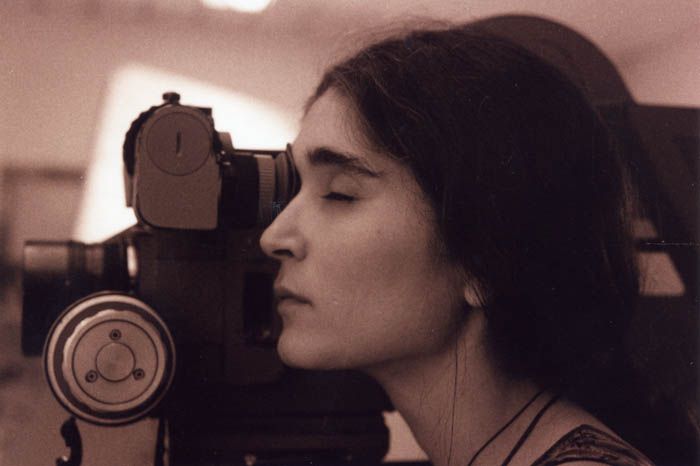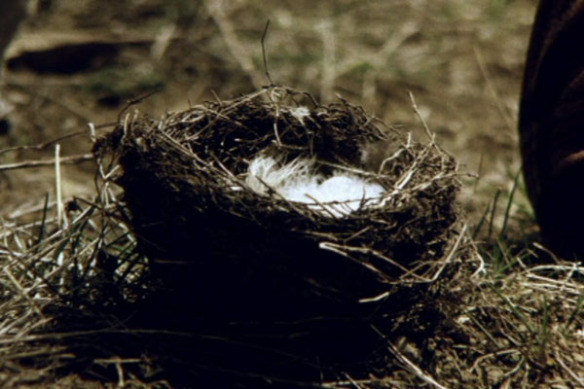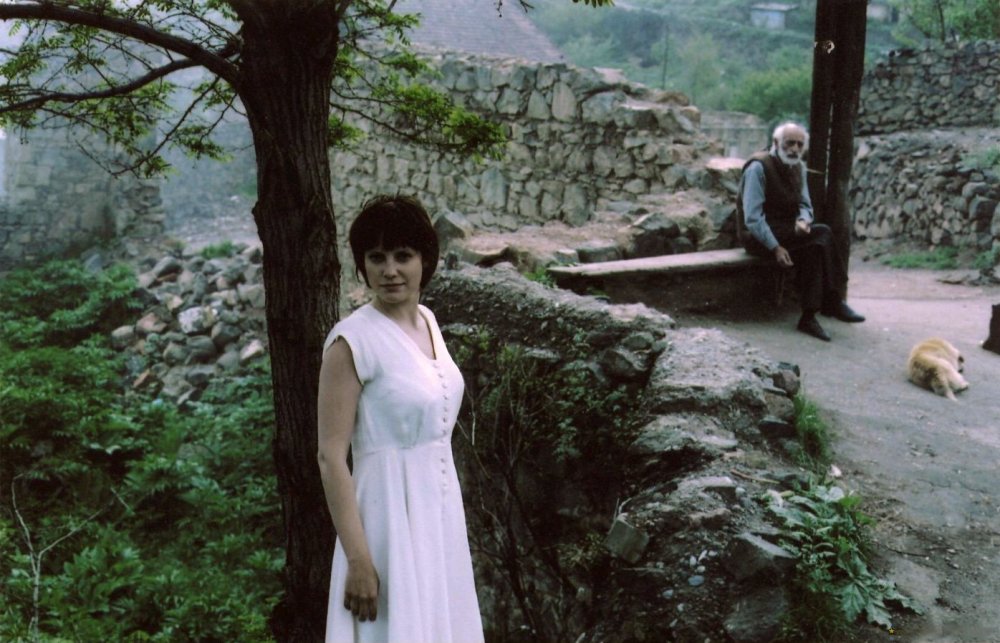By Cathy Brennan
The Lighthouse is available to rent from Vimeo on Demand via Fixafilm until Thursday 6th August, as part of Film at Lincoln Center Virtual Cinema, to mark the tenth anniversary of the film’s debut. It is available on DVD in the UK from Second Run Films.

The first image of Maria Saakyan’s film The Lighthouse, before any credits appear, is that of a book being opened. The pages are frayed and the text cannot be made out in this dark space. It is a tatty book, perused by unknown hands.
This cryptic opening serves as a meta textual device, similar to how Disney’s Snow White or David Lean’s Great Expectations begin with the opening of a book. It signals to the audience that they are about to be told a story. Whereas in those two examples, the device is an assertion of literary authority, the gloomy backdrop and dilapidated appearance of Saakyan’s book hint at The Lighthouse being a story remembered rather than a story being told. A narrative space in which truth and fiction intermingle and become impossible to distinguish.

The film follows a young woman named Lena who returns from Moscow to her war-torn village. Saakyan was 27 when she made The Lighthouse and it is easy to read Lena as a stand-in for Saakyan herself. Due to the war in the South Caucasus, Saakyan had been forced to leave her home in Armenia at the age of 12 and went on to study in Moscow. In a way then, Lena’s return signals Saakyan’s own return to Armenia as an artist.
The elliptical style of the film, alongside the aforementioned opening shot of an opening book, suggests an interiorised perspective of Lena’s experience. Helicopters and gunfire buzz in the distance, but otherwise much of the film is eerily quiet. Soldiers are rarely seen, instead, civilians trying to go about their lives predominate. The mist that frequently drifts through the hilly village further emphasises the haziness of remembrance, foregrounding a sense of subjectivity.
This perspective highlights the gaps of subjectivity, yet also makes up for the absence of other perspectives. International coverage of conflicts like the Nagorno-Karabakh War that shaped Saakyan’s life tend to dwell on its ramification on the international stage, while the suffering of the civilians is only seen materially through statistics and photographs. By contrast, Saakyan’s approach dwells with the psychological experiences of civilians, ranging from an old woman shutting the curtains as she grieves alone, or when Lena’s aunt Kasyana recounts a dream in which she was a pear tree.
Throughout the film, Saakyan emphasises the sense of war being simultaneously near and far away. A fire rages in the background when Lena reunites with her grandfather. Later, when Lena is playing with a young child on the outskirts of the village, their frivolity is destroyed by the sudden emergence of a helicopter over the hill. Moments of levity are underscored by the knowledge of their fragility.

After watching Lena leave the village, as the film draws to its conclusion, Saakyan cuts back to the book first seen in the opening. Those hands, still unknown, close the book. Rather than end the film there on a fitting bookend, Saakyan continues with a final montage which fuses that personal memory work with the historical in a final montage.
The closing of the book signals an end to Lena’s story, as archival footage of refugees being transported comes to the fore. Previously such footage had been sporadically interspersed amid Lena’s narrative, highlighting the ways in which one’s interior life is shaped by the forces of an external, political world. The closing of the book, followed by this montage, situates Lena’s story into a larger historical narrative of civilian displacement in the face of war. The poetics of Saakyan’s style, rather than being detached from the ethical failures at the heart of every war, are tightly interwoven, which ultimately makes The Lighthouse such a mesmerising film.

